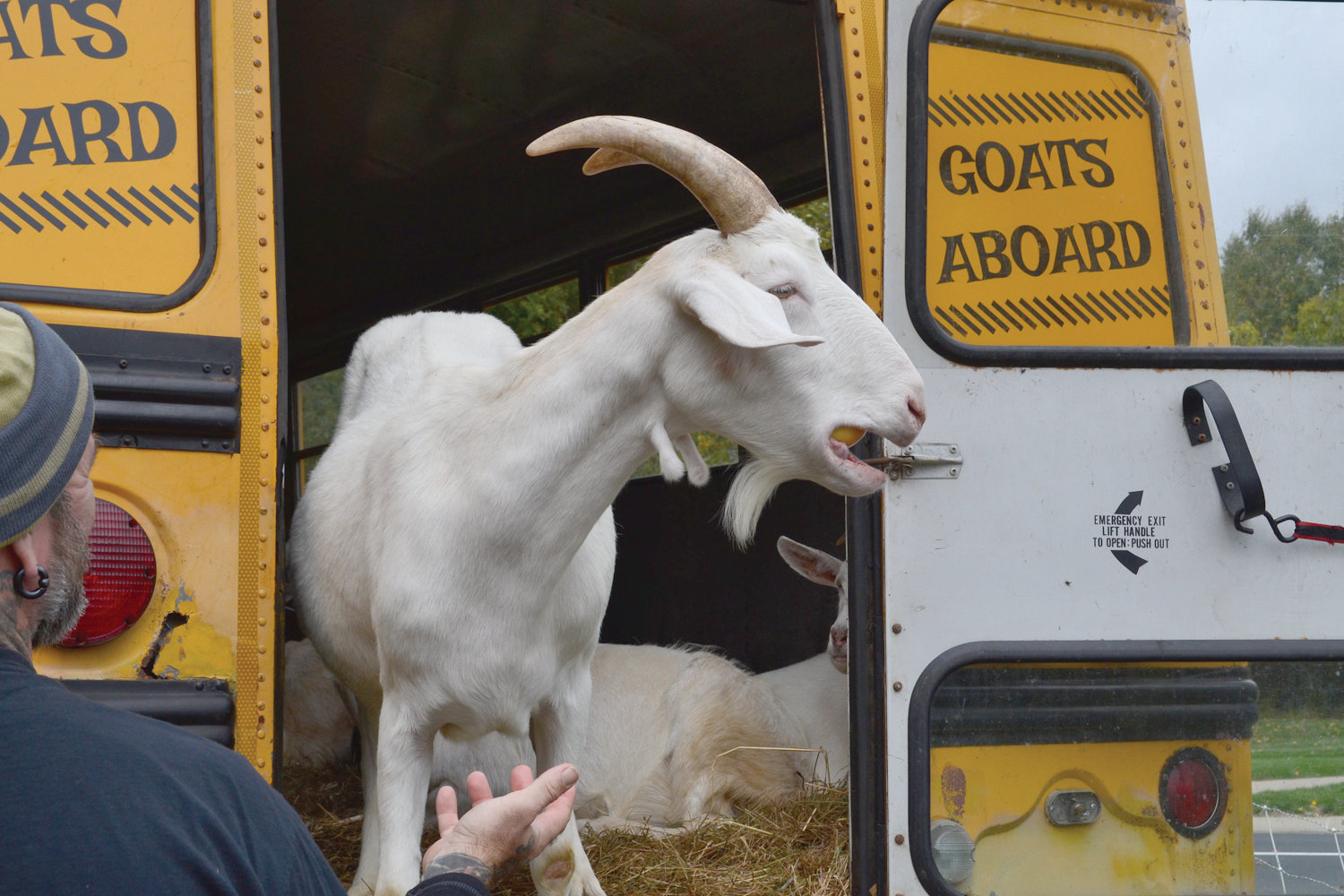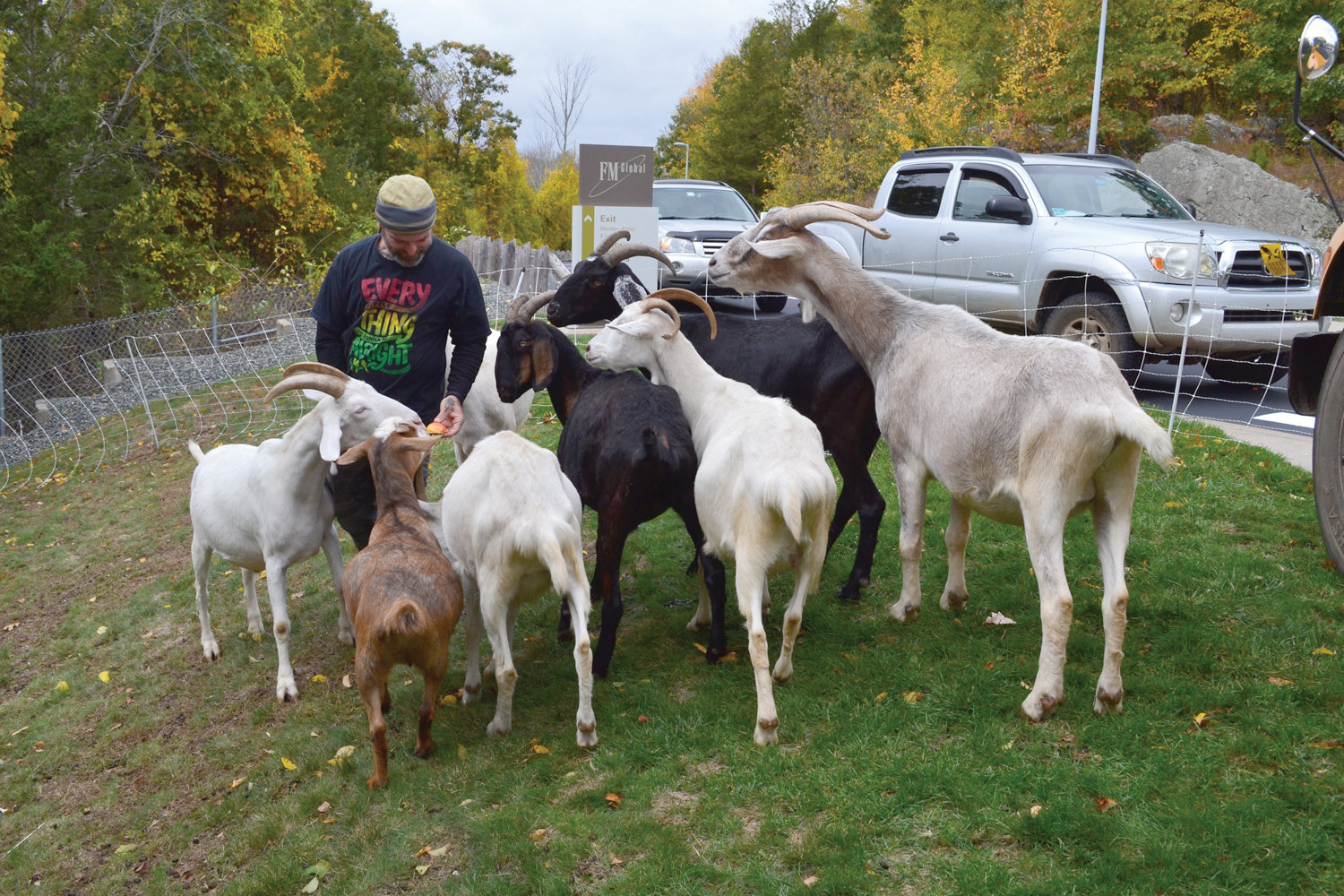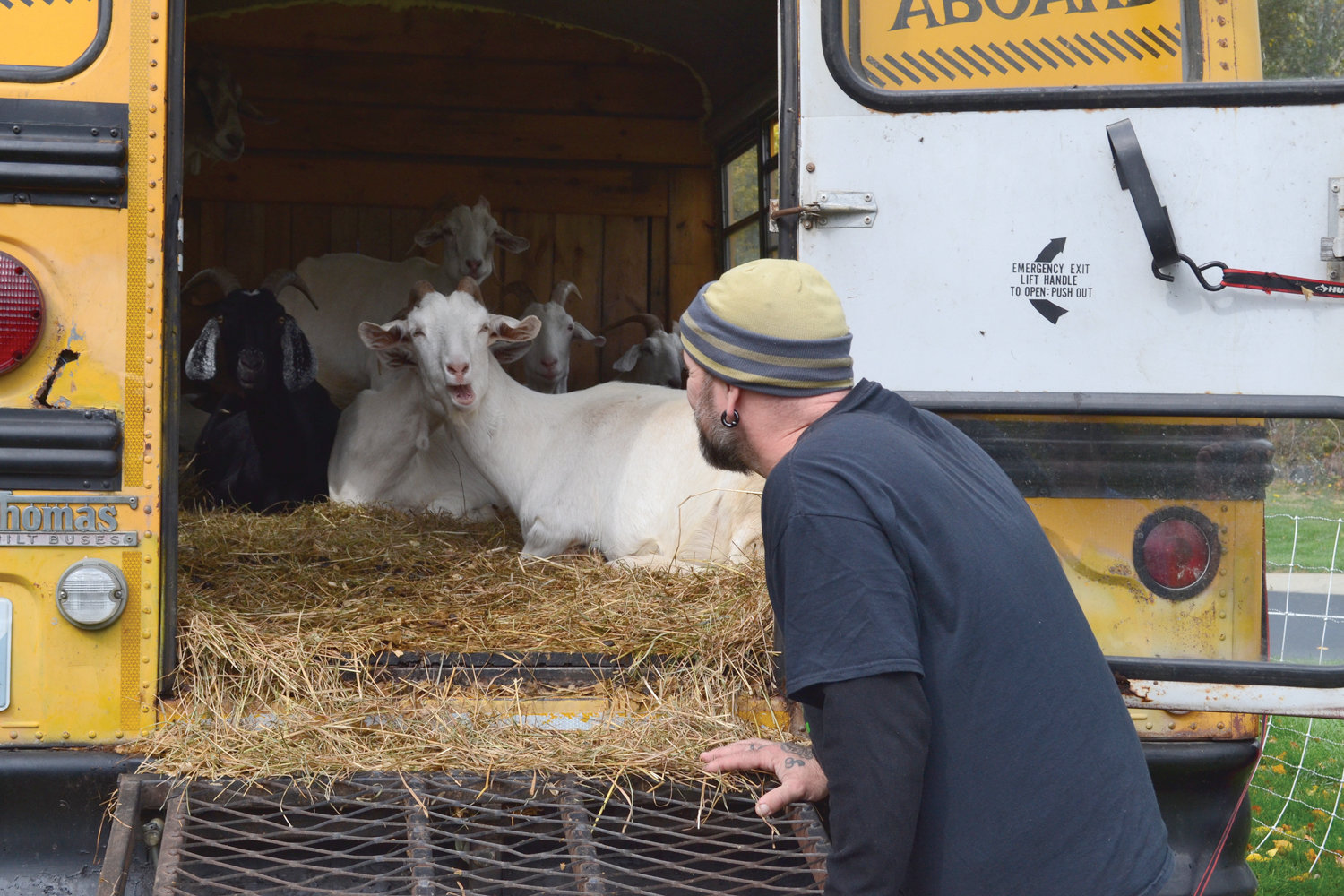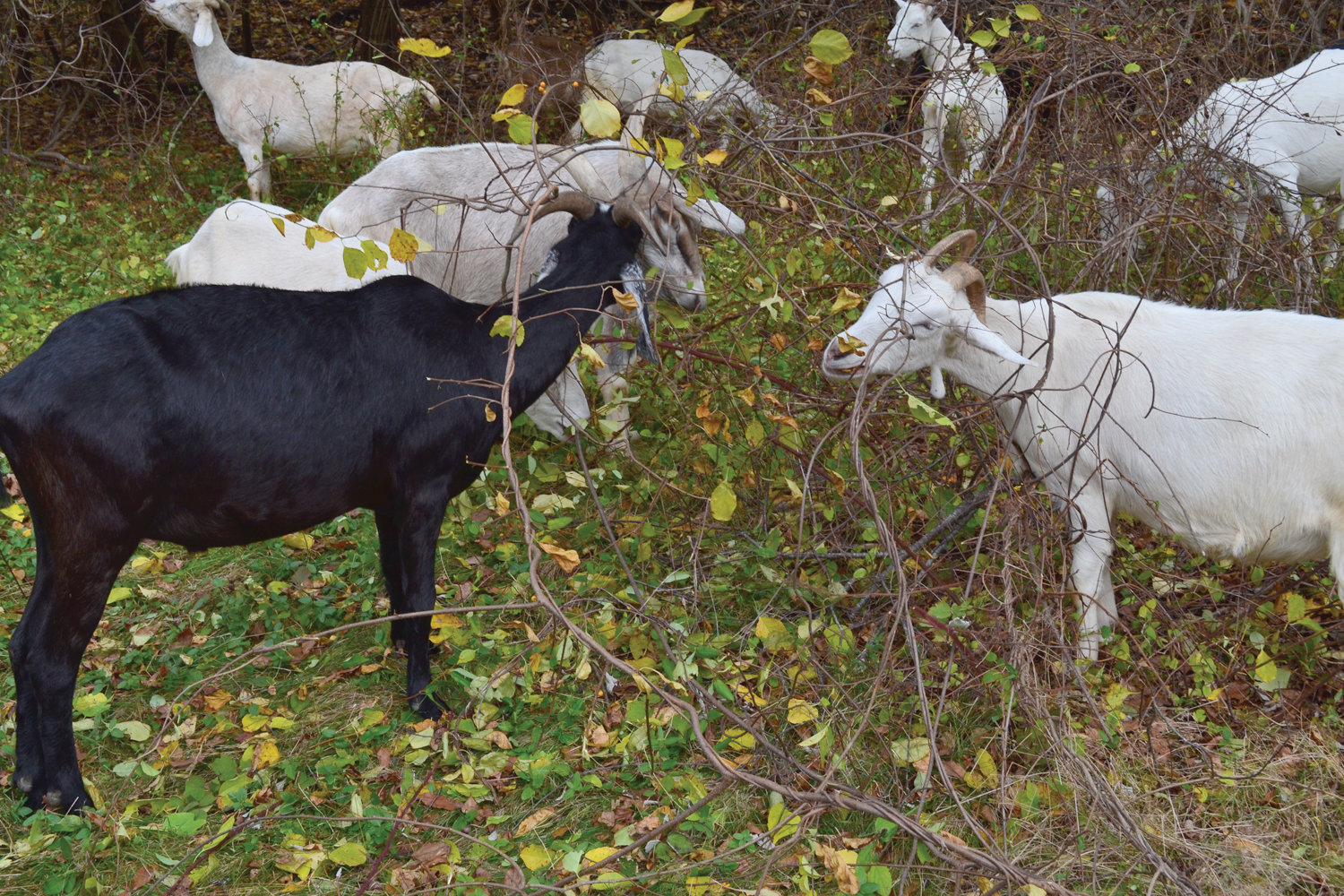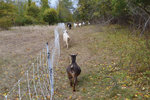Bleat of their own drum
FM Global contracts Herd of Hope to clear vegetation
FM Global recently brought in 19 independent contractors for nine days worth of work, and their resumes couldn’t be topped.
Appetite for bittersweet vines? Check.
Ability to devour up to a half-acre
per day? Check.
Years of experience chowing down across the state? Check.
Those were just some of the qualifications for the Laurel Hill Microfarm’s Herd of Hope, which brought its “goatscaping” talents to Johnston through last week.
Steve Zenofsky, FM Global’s assistant vice president of public relations, said with a smile that the goats had become “hard-working employees” through their efforts. He said FM Global brought the goats in for a trial run of sorts, and the reviews were strong.
“They did such a good job that it’s likely we’re going to have them back next September to continue to stay on top of the fight to increase the native species and encourage them to grow,” Zenofsky said. “I would say simply FM Global prides itself on being a good neighbor in all its forms, and part of being a good neighbor is being a good steward to the environment.”
Zenofsky said he heard about the goatscaping concept from a member of his groundskeeping crew who had heard of the Herd. He said it’s more of a common practice nationwide, and Herd of Hope goat herder Wayne Pitman backed up that assertion.
He said Chris Hannafin – the former state veterinarian and current doctor for the microfarm –
first suggested the venture. He told Pitman that it had been implemented in the West for several years, and added the practice has been used in the Middle East for a millennium.
Rent A Goat, based out of California, opened shop in 2009. According to the company’s website, goats have a penchant for devouring plants that people “find harmful to our crops as well as unsightly to our land.” Those delicacies include poison oak, poison ivy, wisteria, star thistle and the aforementioned bittersweet.
During the short drive over to the goats’ work site, Zenofsky pointed out the bittersweet that had been climbing up the trees.
“See all these vines that are creeping up, all taking over all these trees?” Zenofsky said. “That’s a vine called bittersweet, and it can really choke out the natural plants here that are supposed to be here, and so the goats love the bittersweet, so they will just munch that away.”
Enter Pitman and his Herd of Hope. They follow wherever he goes, whether it’s to get a bite of the apple he’s cutting or down a steep hill to the vegetation they are clearing. They are transported to sites on the “Goat Tote,” a school bus that has been converted into a barn where the goats live during their visits.
Three of the goats live in the front of the bus, while the rest occupy the back. Pitman said that, in the densest brush, the goats could clear one-eighth of an acre every day. However, at FM, they work at about a half-acre pace.
They’re efficient workers, but they have a propensity to wander.
“This [Thursday] morning, this crew broke out,” Pitman said. This crew is noted for that, that’s why there’s a goat herder with them 24 hours a day, because they just leave if you're not there, if you're not watching. I left for two hours to take a shower, I go back and they’re gone.”
Pitman expressed a deep admiration for the goats, saying it’s the “best life” to work alongside them.
“They’re just as smart as people, but they’re goats, they have a different way about themselves,” Pitman said. “When you’re having a discrepancy with a goat, the arguments are usually over much faster. There’s no grudges held.”
Zenofsky said the main building for FM is “one of the greenest” in the state, noting its certification from the U.S. Green Energy Council. When the hub was under construction, he said, there were special industry practices used to protect the nearby forest.
“When we built this, which you might notice is really unusual, is you can see how close the trees are to the building. It’s maybe about 30 feet away,” Zenofsky said. “So, when you’re building to such high standards, the idea is you want to minimize any impact on the environment possible.”
The area is also an Audubon sanctuary, so Zenofsky knows FM is held to a higher standard when it comes to coexisting with the surrounding ecosystem.
“It’s certified by Audubon International for the high standards of environmental practices that we maintain here on the campus in order to support wildlife, in order to encourage native species to grow,” Zenofsky said. “You’ll see there’s areas where we have a lot of vines growing, so the goats take the place of a human groundskeeping crew in order to get rid of all of the things that are bad and compete with the local plants.”


